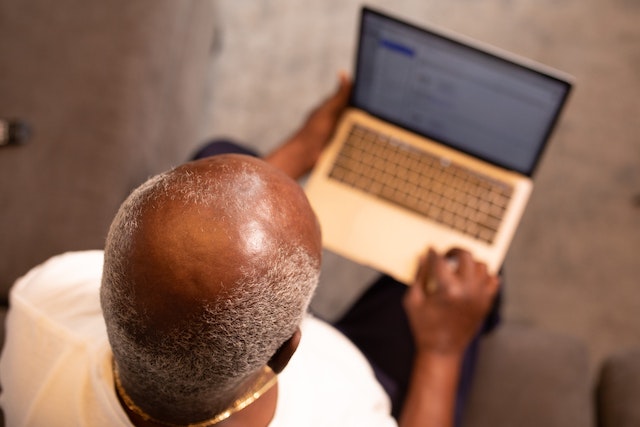
Can you cure male-pattern baldness? In male-pattern baldness, the hair follicles are still present on the scalp, they are simply dormant.
What is male-pattern baldness? It is hair loss that most commonly happens to males and usually follows a specific pattern. It begins at the temples and at the top of the head. The hair on top of the head continues to thin, followed by the crown. Over time, all of the hair disappears except for a ring above the ears. This is known as the Hippocratic wreath because the Greek physician Hippocrates (the man the Hippocratic oath is named after) was bald and spent a lot of time trying to find a cure. There is no standard baldness. It can happen at any age and complete baldness can take anywhere from five years to twenty-five years. To some degree it happens to 80% of men and 35% of women. In America alone, $2 billion is spent on hair loss treatments every year.
What is hair? Hair is a filament made of a tough protein called keratin. Each hair grows out of a hair follicle that attaches it to the skin. The bottom of the hair follicle has a blood supply and stem cells. When a hair falls out, the stem cells activate and grow a new hair. Hair goes through a four-point cycle because the follicles need chance to refresh themselves. The first point is the growth phase, which lasts for about seven years. The second phase is the transitional phase. The growth slows and the follicle shrinks. The third phase is the resting phase. The hair growth stops. This phase lasts a few months. The fourth phase is the shedding phase. The hair detaches and falls out. Then the cycle repeats. Most people lose about 100 hairs a day from their head, but this isn’t a problem because you grow new hair at the same rate.
Almost all mammals have hair. They use it for warmth, protection, and sensation. There is a sensory nerve fiber that wraps around the root of each hair, so mammals know when it is touched. There is also a muscle that allows mammals to raise the hairs to trap in air, or to look bigger in front of a predator. We still have these muscles, which is why we get goosebumps.
If there are stem cells in the hair follicles and a new hair is grown when an old one falls out, why does male-pattern baldness happen? For years, scientists thought that this was because the hair follicles were dead, but it turns out that they are just sleeping.
Hair loss is caused by a hormone called dihydrotestosterone (DHT). It is formed from testosterone and is responsible for most of the changes in men at puberty. Some people have a genetic predisposition to have more DHT than others. Men with a lot of facial hair and body hair probably have a higher level of DHT. However, simply having a high level of DHT doesn’t guarantee hair loss. Some people have a genetic sensitivity to DHT. The DHT attaches to receptors in the hair follicle, and it prevents proteins, vitamins, and minerals from reaching the hair, which causes the hair follicle to shrink. As the follicle gets smaller, the hair it produces gets thinner and grows at a slower rate. Finally, the hair stops growing and the follicle becomes dormant. But it is not dead.
There is a pathway, called JAK-STAT inside the hair follicle that activates during the rest phase and the shedding phase. This JAK-STAT keeps the follicle dormant, but it usually only lasts a short time before the follicle reenters the growth phase. With baldness, it stays activated. A JAK inhibitor can wake them up, but so far, only in mice. There is an immune-related cell in the skin that produces Oncostatin M, which is responsible for keeping the hair follicle dormant. A molecule inhibitor or an antibody could block the receptor that the Oncostatin M works on, switching hair growth back on. This potential cure might be a long way away, but it is there.
So, can you cure male-pattern baldness? The quick answer is no. However, as it seems to be caused by Oncostatin M and a pathway called JAK-STAT, there is some hope that it could be reversed one day. Researchers have managed to switch the hair follicles of mice back on, but humans are a long way off. The company that works out how to wake up these follicles and cures male-pattern baldness will have a very popular drug on their hands and become exceedingly wealthy. They will have my money, for one. And this is what I learned today.
Sources
https://www.getmosh.com.au/hair-loss-treatment
https://www.science.org/doi/10.1126/sciadv.1500973
https://www.belgraviacentre.com/blog/what-is-dht
https://www.webmd.com/skin-problems-and-treatments/picture-of-the-hair
https://en.wikipedia.org/wiki/Pattern_hair_loss
https://www.aestheticsmd.com/hair-loss/science/science-of-male-pattern-baldness/
https://www.healthline.com/health/male-pattern-baldness
